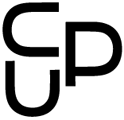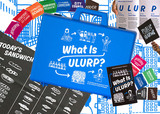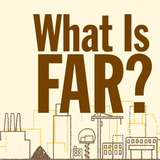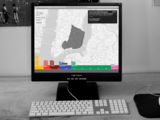Community Education
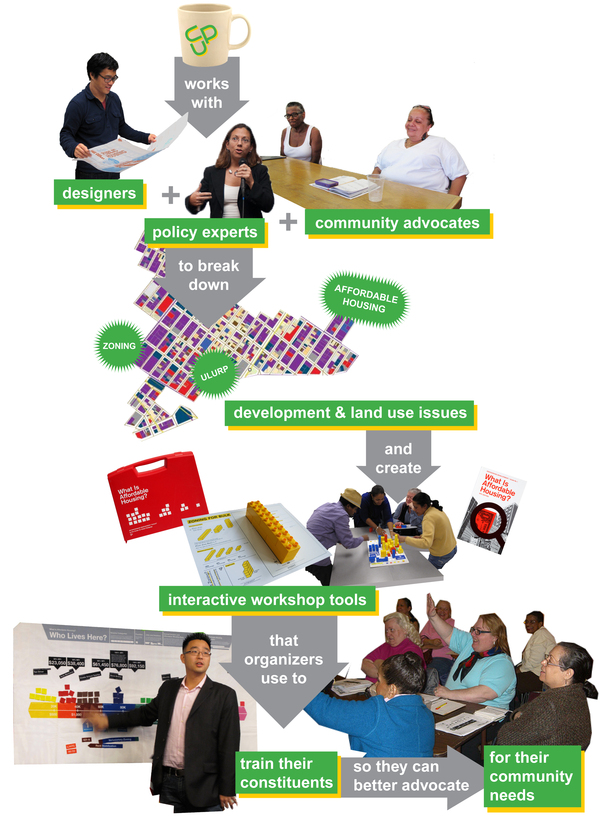
Envisioning Development
New York City land-use law includes requirements for public participation, but the complexity of development terminology can discourage even committed community advocates. As a result, public discussion of development proposals flattens into “pro” and “anti” positions, and many community members who could provide valuable input simply stay silent. Maybe the experts like it that way, but given the large and long-term community impacts of land-use decisions, that’s not the way it should be.
Community education isn’t the only barrier to meaningful participation in the New York City land-use decisions, but it’s one of the biggest. With access to key concepts and technical jargon, community members can develop and articulate positive, nuanced visions for their neighborhood to the experts. More community members participate effectively, and experts get more responsive. Shouting matches can turn into discussions.
Envisioning Development is a set of portable, interactive, workshop tools designed to help experts and laypeople communicate. Advocates, policy wonks, community board members, developers, and others can use the tools as a centerpiece for workshops and conversations that describe and clarify problems and propose and communicate solutions.
The toolkits are visual, tactile, and interactive. Each tool translates abstract concepts and language into straightforward activities and physical objects that let people learn by looking, doing, and listening to each other. Participants teach themselves and others as they use the tools. Concepts and jargon turn out to be less complicated than they seem.
CUP works with an advisory board of housing organizations and land use and planning experts to determine which topics they most need assistance explaining to their communities. CUP researches the concept and works in consultation with community partners to break down the concepts into visual, hands-on interactive teaching tools. The tools are tested extensively through hands-on workshops led by our community partners. They are distributed citywide to housing and planning organizations, who use the tools in their own advocacy and organizing work. Each tool comes with informative graphic guides to help organizers facilitate workshops, so that they can more efficiently establish a shared understanding of planning terminology and more quickly move on to their organizing work. CUP also facilitates workshops upon request, and provides trainings on how to run the workshops.
CUP launched its first toolkit, on Affordable Housing, in 2010. The second toolkit, on Zoning, launched in 2013. A toolkit on the Uniform Land Use Review Procedure is currently under development.
The toolkit has served our advocacy movement, to educate our partners on what affordable housing really is, and what affordable housing development means in NYC. We purchased it to explain technical jargon. The toolkit helps visualize everything. – Richard Lee, Asian Americans for Equality
Find out more about the Affordable Housing Toolkit here and the Zoning Toolkit here. To request a workshop or training, or suggest a topic for future toolkits, email mark (at) welcometocup.org
Press
- City Limits
- May 03, 2019
The Department of Housing Preservation and Development has anew commissioner. Until last year, Louise Carroll had worked at HPD for 12 years, most recently overseeing the tax incentives program. The New York Post reports that NYCHA cut down more than 200 trees at the Baruch Houses on the Lower East Side. Residents were upset. According to NYCHA, deforestation is part of Hurricane Sandy recovery and repair efforts and the trees will be replaced. The Center for Urban Pedagogy along with several partners has launched a campaign educating tenants about how to report landlord harassment.
- Brooklyn Daily Eagle
- March 08, 2019
Another thing that triggers the ULURP process is a proposal from the Department of City Planning or a different city agency to change the zoning in an entire neighborhood.Big drama can break out when neighborhood residents object to ULURP plans. There’s fiery testimony at public hearings. Community groups organize protests.The ULURP process takes several months — and often upward of a year for larger projects.We’ve synthesized our description of how it works with the help of materials from the DCP’s website and the “What is ULURP? Guidebook,” published by the Center for Urban Pedagogy.
- US China Press
- March 08, 2019
城市教育中心(Center for Urban Pedagogy)项目经理托瑞(Mark Torrey)介绍, ULURP是纽约市区划制度的运作核心, 任何与当前区划不一致的开发提议都必须申请进行ULURP。ULURP是一个标准化的流程,其目的是让影响城市土地使用的项目申请通过公众参与的审核。该过程主要包括申请、认证及各部门的审查。纽约宪章也规定了该流程中各部分的决策时间。ULURP主要的参与包括市规划局、市规划委员会、社区委员会、区长、区委员会、市议会及市长。
- Franknews
- May 22, 2018
For most of our projects, community organizations apply to work with us, and they tell us what issues they’re having a hard time explaining to their constituents. What policy or planning process they’re having a hard time explaining, and why that’s creating injustice in their community
